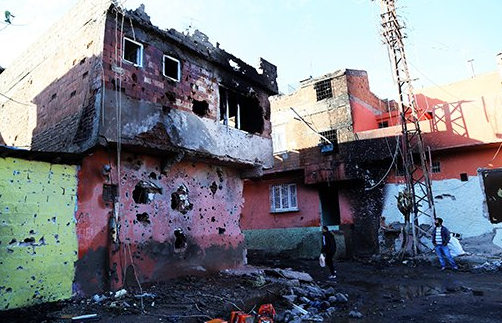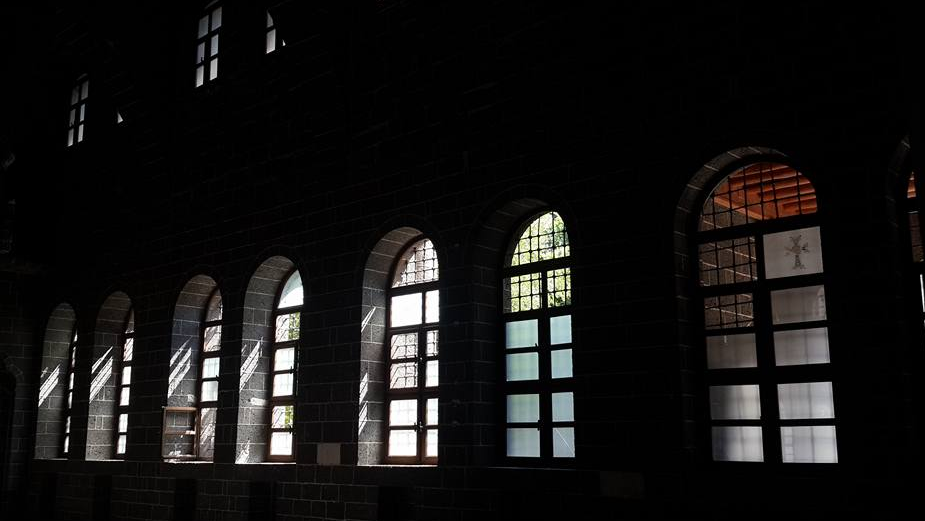The Implications of Turkey’s Renewed War on the Kurds
January 7, 2016
‘Their response to eliminate the Armenian problem was to attempt the elimination of the Armenians themselves.’ (Photo: Ottoman newspaper İkdam on 4 November 1918)
One hundred years ago, the leaders of the Ottoman government were paranoid that Armenians’ demand for reform, improved legislation, civil rights, and protection of life and property in the historic Armenian provinces would lead to Armenian independence, and thus the breakup of the empire. Their response to eliminate the Armenian problem was to attempt the elimination of the Armenians themselves. The civilian Armenian population that disappeared from the state was about 10 percent of the total population.
One hundred years later, Turkey’s leaders are paranoid that the demands of another minority population—for education in their own language, self-rule, and local autonomy—will lead to independence and the breakup of the state. However, it is not easy to eliminate the Kurdish problem by eliminating the Kurds, as they make up one-third of the population in Turkey; they also form the majority of the population in the eastern and southeastern provinces. Instead, the government has employed tactics to break the will of the general Kurdish population by “cleansing the region from Kurdish militants,” isolating them town by town, street by street, and house by house.
The result has been the huge suffering and loss of the civilian population. For the past several weeks, there have been ongoing curfews imposed in seven southeastern provinces. Electricity, water, and essential services have been cut off. One or two bakeries have been allowed to stay open, but people get shot when they venture out of their homes to get bread—the police and the troops shoot anyone that ventures out into the streets. Civilian losses are in the hundreds if not thousands, and include women, children, and the elderly.
The state and the state-controlled media do not report these civilian killings, or merely report them as “killed terrorists.” In fact, the government uses the rather cryptic phrase “terrorists made ineffective” when referring to these killings. Among the civilians shot as terrorists are a 5-month-old baby, pregnant women, and an 80-year-old elder. The bodies of civilians shot in the streets lie there for several days, as it is impossible to remove them under the barrage of gunfire from the police and army troops. The bodies of those shot in their houses cannot be removed for burial, as people cannot leave their homes; the dead bodies are kept in freezers hooked to generators or wrapped in nylon bags. The morgues at the hospitals are so full that there are reports of hospital kitchen freezers being used to store the bodies, with the stench spreading through the building.
One of the worse areas of suffering is the historic central municipality of Sur in Diyarbakir, where the recently reconstructed Armenian Surp Giragos Church is located. This municipality is recognized as a cultural heritage site, with many historic buildings, churches, and mosques. It is now mostly in ruins. Most of the buildings have been destroyed by rockets and cannon fire from army tanks. The Surp Giragos Church has escaped relatively unscathed with only broken windows and some bullet holes. But the Armenian Catholic Church had its doors broken down and some internal damage. The most important mosque in Sur, the historic Kursunlu Mosque—originally the St. Theodoros or Toros Armenian Church, converted to a mosque in the 16th century—has been completely burned down.
The population of Sur has gone down from 24,000 to only 2,000 in the past month. None of the shops and restaurants remain open in the lively, bustling center of Diyarbakir, now completely deserted. Several shops that were recently returned to the ownership of the Surp Giragos Church after successful negotiations and court cases are now shuttered, with loss of revenue to the church. Ironically, the government has just announced that the bullet-ridden and burnedhistoric buildings of Sur will all be expropriated and demolished, to be replaced by modern housing to be constructed by the government’s urban renewal agency.
Why are these events critical to the Armenians?
Firstly, there are untold numbers of “hidden Armenians” among the suffering Kurdish civilian population in these eastern and southeastern provinces. Whatever hell their grandparents went through 100 years ago, these hidden, Islamized Armenians are suffering a similar fate now. The ones who recently “came out” and revealed their Armenian identities are perhaps suffering even more.
Secondly, the hatred toward Armenians among the Turkish population, and especially in the Turkish security forces, has come out in the open during these blockades and attacks on the Kurdish population. The brainwashing, discrimination, and hatred against Armenians in the media, education system, and in government circles are apparent in the announcements from the Turkish police loudspeakers that taunt the Kurdish public and militants with pronouncements like: “You are all Armenians, you are all Armenian bastards,” or “You will all die, seeds of Armenians.”
Thirdly, and more ominously, the possibility of a proxy war between Armenia and Azerbaijan is increasing greatly, and is linked to these events. The war on the Kurds in Turkey is connected to preventing Kurdish moves for autonomy in Syria and Iraq. Increasing evidence of connections, cooperation, or—at a minimum—complicity between Turkey and ISIS has resulted in increasingly dangerous steps being taken by the Turkish leaders to cover up the evidence. Journalists who uncovered evidence of arms flowing from Turkey to ISIS have been jailed or even killed. Russian, Norwegian, and international evidence of oil flowing from ISIS to Turkey resulted in a downed Russian jet. One of the retaliatory moves by Russia was the installation of the most advanced antiaircraft weaponry in Armenia, with instructions to shoot down any Turkish jet that crosses the Turkish-Armenian border. And the potential for war involving several countries in the region keeps increasing.
Source: Armenian Weekly
Link: The Implications of Turkey’s Renewed War on the Kurds

